Personal Mission
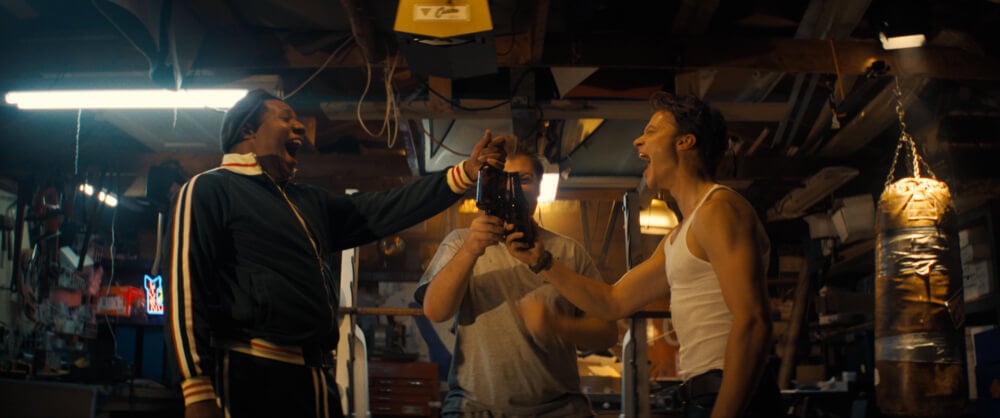
In writer-director Leo Milano’s debut feature, The Crusades, three friends find their school year thrown into turmoil by the possibility that their all-boys private high school might merge with its rival institution, a turn of events that would effectively open the doors to the lions. “It’s a coming-of-age story,” cinematographer Dillon Schneider says. “We shot it like a drama, but it’s a fun adventure. I describe it like Superbad with a dash of Euphoria.”
Schneider’s own adventures behind the camera began by way of ski videos he shot while in middle school. Video-production classes followed in high school, after which he focused on cinematography at Columbia College Chicago, the alma mater of such distinguished directors of photography as Janusz Kaminski, Mauro Fiore, ASC and Michael Goi, ASC. After graduating, Schneider moved to Los Angeles and “started shooting shorts and music videos and working as an electrician when I wasn’t shooting,” he recalls.
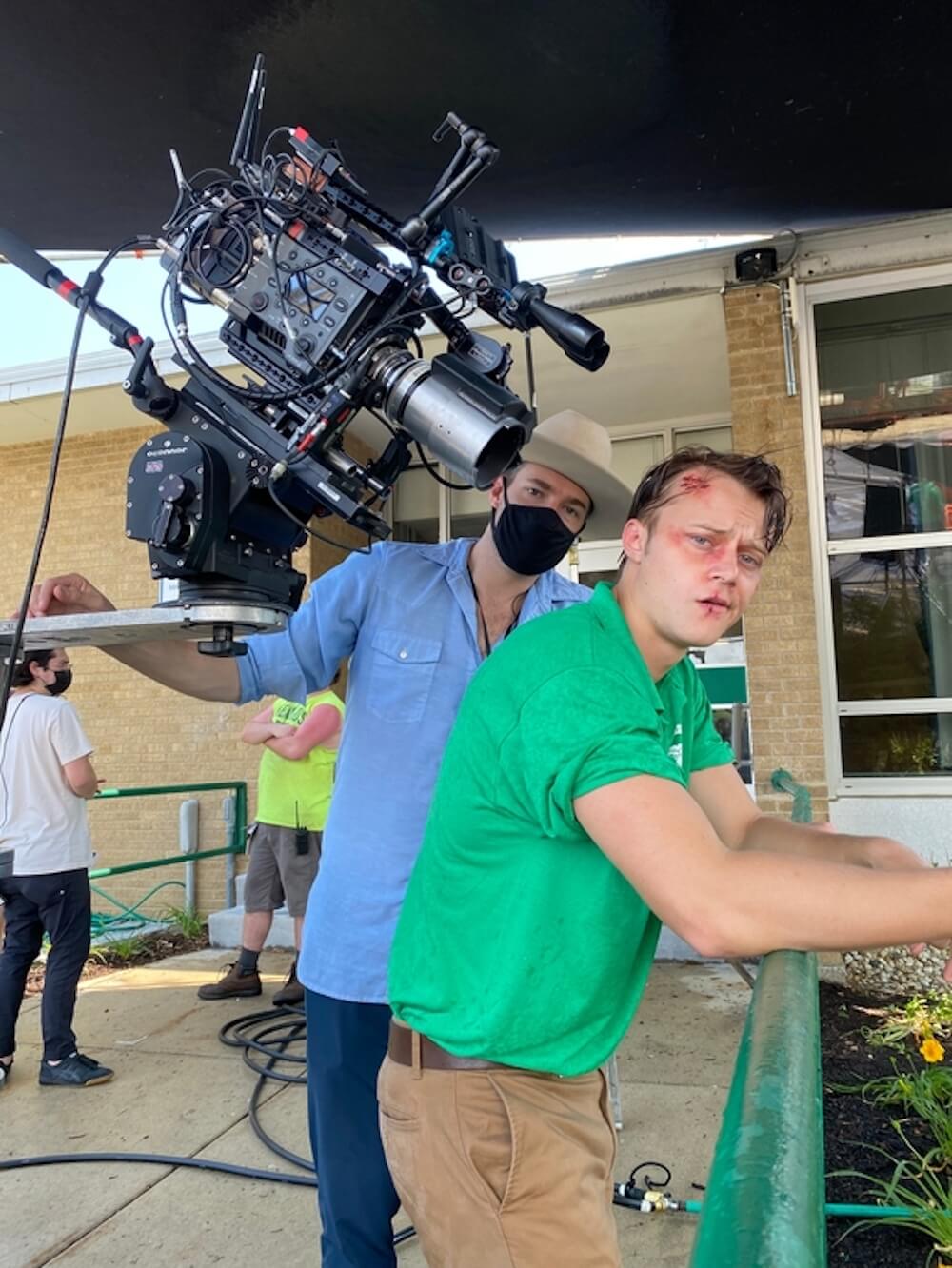
It was during his time at Columbia that Schneider began collaborating with Milano and their classmate Brent Madison, who would go on to produce The Crusades. “Leo’s very passionate about shooting in his hometown, so we shot in Chicago and worked with a lot of Columbia alumni,” Schneider notes. “We actually shot in the school that Leo went to.”
It was also while he was attending Columbia that Schneider began working with Panavision, spending one of his summers as an intern at the company’s Woodland Hills headquarters. “For me, being at Panavision is like I’m a kid in a candy shop,” he shares. “You walk down the halls, and there’s just so much history. It’s an inspiring place to be — there are endless opportunities to create.”
The Crusades also marks Schneider’s debut feature, and for the project, he worked with David Dodson, Panavision’s senior vice president of client relations and business development, to put together a package that included C Series and E Series anamorphic optics expanded to cover the Venice camera’s large-format sensor. “I wanted my first movie to be Panavision and to have that Panavision look,” Schneider says. “David believed in me and made it happen for us. The film would not look like it does without the help of Panavision. I’m so grateful for the relationships I have here and what everyone’s done for me.”
-and-khalil-everage-(sean-murphy)-2-1000x418-62eaa58.jpg?sfvrsn=7fc4ee93_3)
During preproduction for The Crusades, Schneider also assembled a visual treatment, a 73-page document that contains detailed notes and reference images related to cinematic language, framing, camera and lens choices, filtration, camera movement and more. “They taught us this at Columbia,” the cinematographer explains. “It shows the producers, camera operators, and all relevant departments things like lighting and mood and framing rules. It’s also big for the production designer to see how I’m thinking about sets and locations and how we can collaborate. But most of all it also helps me to get all my notes in one organized place. I carry my iPad on set, open to the scene we’re shooting and remind myself, ‘use diffusion for this’ or ‘make sure I'm lit for high speed here.’ Everything happens so fast on indies, this is my checklist to dial-in each scene.”
As Schneider discussed the look of the feature with Milano, he knew immediately they were envisioning it in the same way. “Leo and I are both drawn to the hyper-realistic, what Vilmos Zsigmond [ASC, HSC] called ‘poetic realism’ — images that are heightened and more romantic than real life,” Schneider says. “The look we went for was bigger than real life, really dramatizing the situations like the mind of a high-schooler does — shafts of light, haze, making things eerie and dramatic.”
-1001x418-62eaa58.jpg?sfvrsn=cc1e91a3_3)
To that end, he adds, he and Milano “knew we wanted to shoot anamorphic, which just has this magic feel to it that translates to what these high-school kids are experiencing. Everything to them is based on their emotions, so everything feels way more substantial and surreal.”
The filmmakers’ primary lenses were a set of legacy C Series anamorphic primes, which were supplemented with select E Series focal lengths. “I’ve always been drawn to the C Series look,” the cinematographer shares. “It has this magic to it, which is the look of classic cinema. And the E Series cut together so well with the Cs. We had an E Series 180mm, which was usually the long lens on the B camera. Because of the large format, it felt more like a 140 or 150. We also had a special Dan Sasaki-modified E 40mm we used for a drunk character’s POV. It was super-funky and worked perfectly for the gag. Only the center was sharp, and the world around it was super-distorted.”
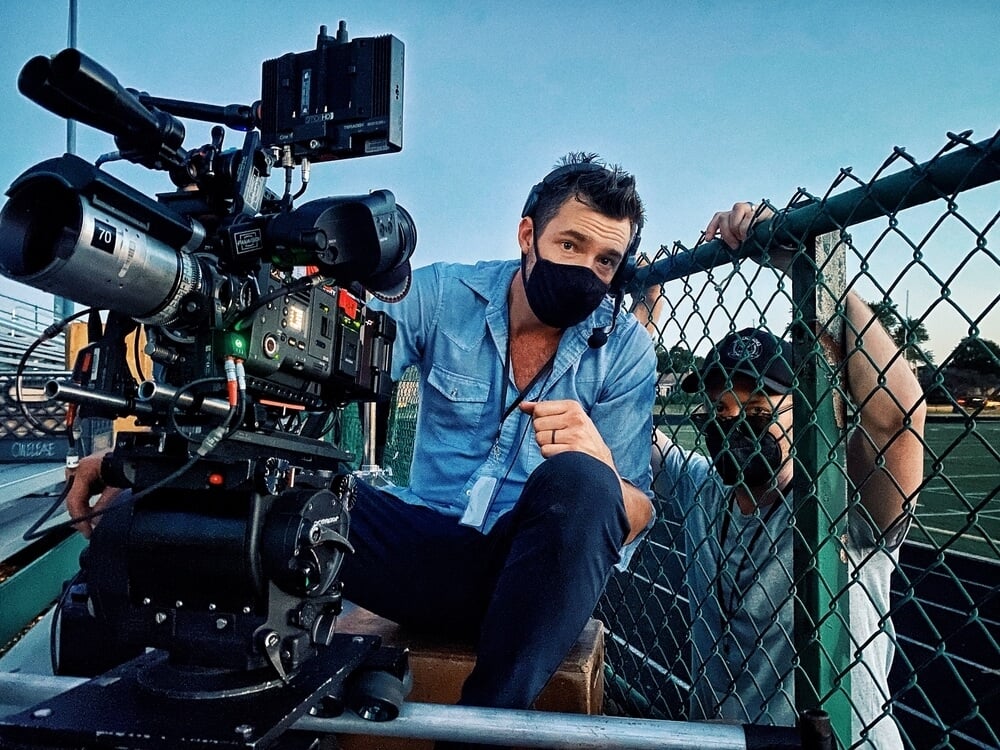
Schneider estimates that 80 percent of the movie was shot with a single camera, with two cameras rolling simultaneously the remainder of the time. His camera team included 1st AC James Teninty and A-camera and Steadicam operator Will Christensen. “James has done a lot of music videos and commercials with me, and he had all of the camera gear dialed-in and ran the department like a well-oiled machine,” Schneider reports. "Will went to Columbia with me, and he flew back out to Chicago to do this shoot, which meant a lot. Whatever intense situation was happening, I could always rely on him to be cool, calm and collected, which is great to have on your team.
“I’m very particular about camera movement,” he continues. “I only try to move the camera when it's necessary, and if the audience notices the move, I've done my job poorly. We had Steadicam for the run of the show, but we’d only use it when the shot was absolutely supposed to be Steadicam. Most of the show was on dolly or handheld.”
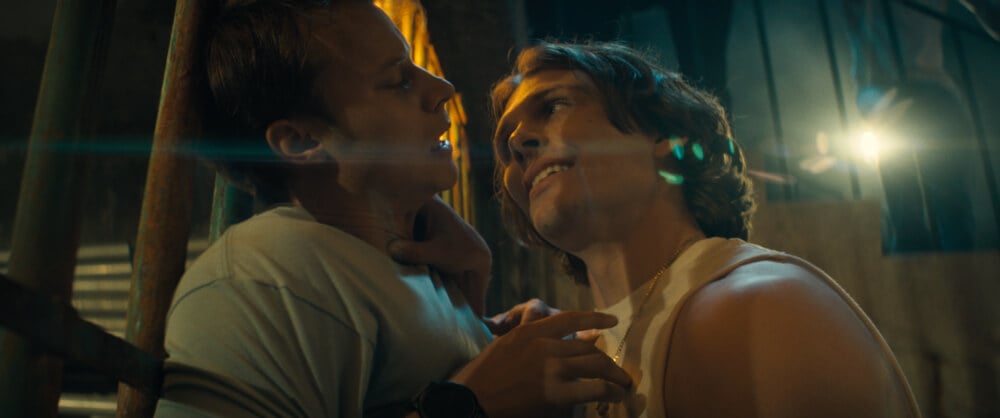
The Steadicam did come into play for a large night scene, executed in a single shot, in which the police break up a party. “There was a long oner in True Detective Season 1 that was one of our inspirations for that,” Schneider recalls. “We had two Condors in the air, shafts of light coming through the trees, 50 extras, kids jumping off roofs, people getting tackled — there was a lot to get correct. We did eight or nine takes, and when we got it, Leo turned from the monitor and said, ‘This is exactly how I imagined it in my head.’ Nothing makes me happier than that.”
Principal photography took place over a brisk 17 days in the Chicago summer. “It was a hustle,” Schneider acknowledges, “but we had an amazing first AD, Sarò Melero Bonnin, and Brent, our producer, scheduled it well. Everyone was pulling on the rope to make it happen. Every single person who was attached to this project swung for the fences and respected everybody else for doing the same thing, and it absolutely shows on screen.”
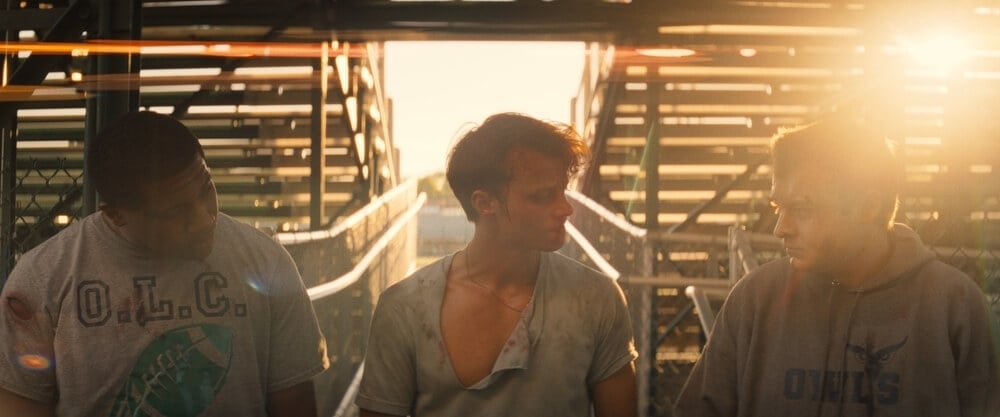
All images courtesy of the filmmakers.

